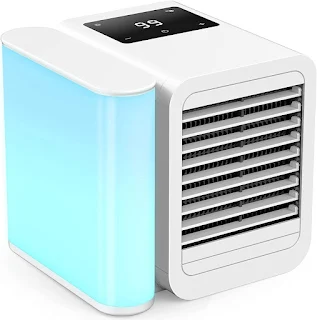The Limitations of Evaporative Cooling: Not Suitable for All Weather Conditions
The Limitations of Evaporative Cooling: Not Suitable for All Weather Conditions
Introduction
Evaporative cooling is an energy-efficient and environmentally friendly method of cooling spaces. It relies on the natural process of water evaporation to lower the temperature of the air. While this technology has gained popularity for its cost-effectiveness and sustainability, it's essential to understand that it is not suitable for all weather conditions. In this blog, we will explore the limitations of evaporative cooling and when it may not be the best choice.
1. High Humidity
One of the most significant limitations of evaporative cooling is its ineffectiveness in high-humidity environments. Evaporative coolers work by drawing warm air through water-saturated pads, causing the water to evaporate and cool the air. However, when the air is already saturated with moisture, as is often the case in humid climates, there is limited room for additional water vapor. As a result, the cooling effect is greatly reduced, making evaporative cooling inefficient in such conditions.
2. Temperature Restrictions
Evaporative coolers are most effective in regions with hot and dry climates. They can significantly lower temperatures by several degrees, providing a comfortable indoor environment. However, in areas with milder or already cool temperatures, the cooling effect may be insufficient to achieve the desired comfort level. In such cases, traditional air conditioning systems may be more appropriate.
3. Water Availability
Evaporative coolers require a constant supply of water to function effectively. In regions with water scarcity or strict water conservation measures, using these systems may not be sustainable. Additionally, the water used in evaporative cooling systems needs to be regularly replaced or treated to prevent the buildup of minerals and impurities in the cooling pads, which can reduce efficiency and potentially lead to maintenance issues.
4. Limited Cooling Range
Evaporative coolers are designed to cool specific areas or rooms, making them less suitable for cooling large spaces or entire buildings. Their cooling range is limited by the airflow capacity of the unit and the size of the cooling pads. In contrast, traditional air conditioning systems can be scaled up to cool larger areas effectively.
5. Seasonal Considerations
Evaporative cooling is most effective during the hottest months of the year when air humidity is relatively low. In regions with distinct seasons, this cooling method may only be suitable for a portion of the year. Residents may need an alternative cooling solution for the rest of the seasons, which can be an inconvenience and additional expense.
check out Cool Air Conditioners
Conclusion
While evaporative cooling offers numerous benefits, including energy efficiency and eco-friendliness, it is essential to recognize its limitations. High humidity, temperature restrictions, water availability, limited cooling range, and seasonal considerations can all impact the effectiveness of evaporative cooling systems. Before choosing this method, it's crucial to assess the local climate and conditions to determine whether it's a viable option for cooling your space. In some cases, a combination of evaporative cooling and traditional air conditioning may provide the best solution for year-round comfort.
Check out my HVAC books, on Amazon, Apple, Google & Payhip


%20connected%20to%20a%20central%20AI%20hub%20displ.webp)

Comments
Post a Comment